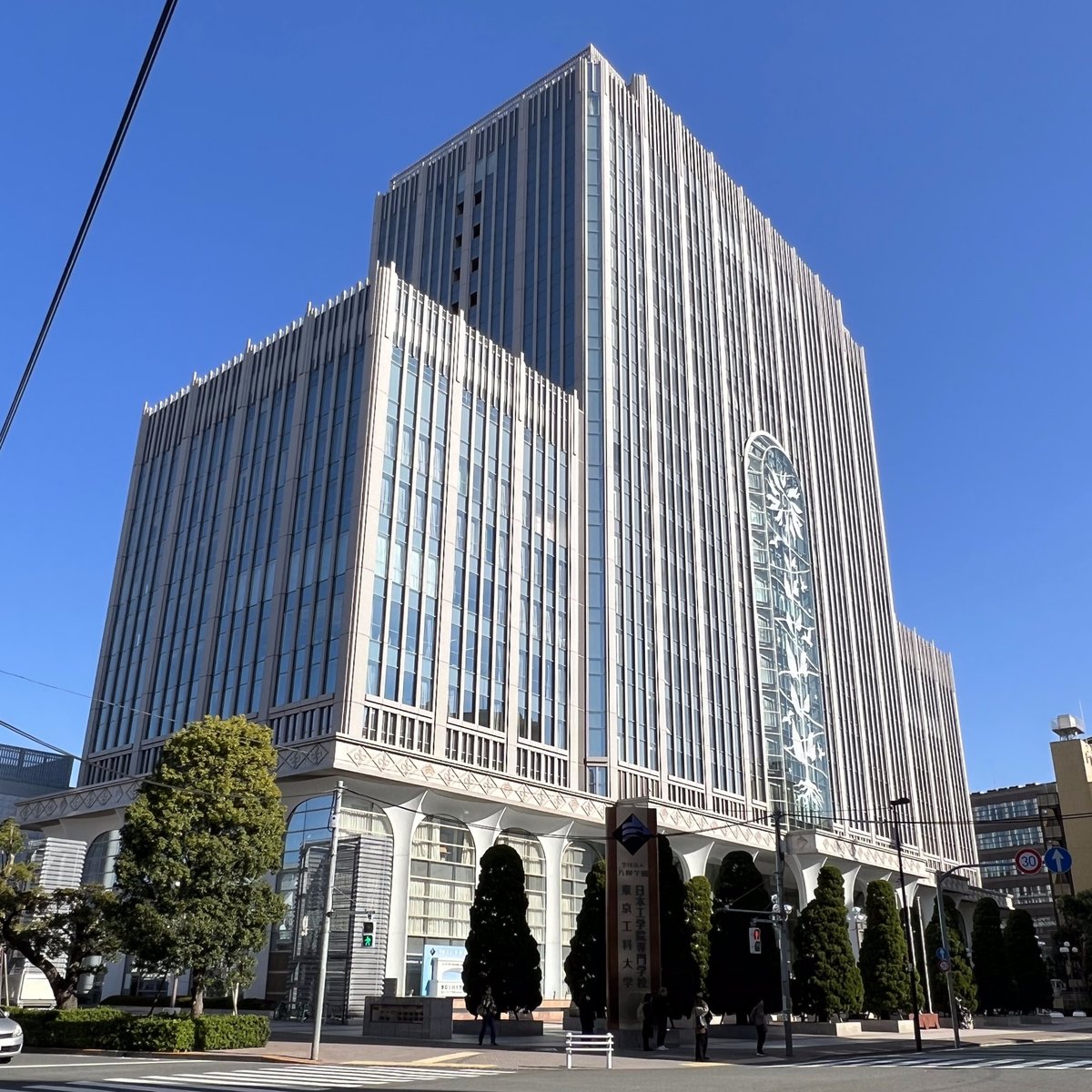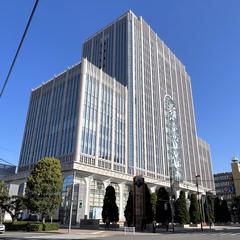
Tokyo University of Technology Visiting Guide: Hours, Tickets, and Nearby Attractions
Date: 14/06/2025
Introduction
Tokyo University of Technology (TUT) is a distinguished institution that reflects Japan’s enduring commitment to technological progress and education. Established in 1947 during Japan’s postwar reconstruction, TUT has grown into a multifaceted university known for its excellence in engineering, computer science, media, and health sciences. Its main campus, located in the spacious and modern Hachioji district of western Tokyo, provides visitors with a unique opportunity to experience a vibrant academic environment where innovative research and practical education converge.
Whether you are a prospective student, technology enthusiast, or cultural explorer, this guide offers essential information for planning your visit—including campus history, academic highlights, visiting logistics, and tips for exploring local attractions. For the latest details, consult the official Tokyo University of Technology English website, alongside travel and campus resources (Tokyo University of Technology - Campus; EduRank - Tokyo University of Technology).
Contents
- Introduction
- History and Development
- Research and Global Recognition
- Educational Philosophy and Student Life
- Visitor Information
- Visiting Hours
- Tickets and Admission
- Visitor Guidelines
- Campus Highlights
- Nearby Attractions
- Frequently Asked Questions (FAQ)
- Conclusion
- Sources and Official Links
History and Development
Founding and Early Growth (1947–1970s)
Tokyo University of Technology (東京工科大学, Tokyo Kōka Daigaku) was founded in 1947 as a response to Japan’s urgent need for skilled engineers and innovators following World War II. Its initial focus was on engineering and applied sciences, providing practical skills essential for the country’s rapid industrial and infrastructural rebuilding. The 1950s and 1960s saw the university expand its academic offerings and facilities, aligning with Japan’s economic growth and rising demand for technical expertise. The institution’s commitment to combining theoretical education with hands-on training remains a hallmark of its programs (Tokyo University of Technology - Campus).
Expansion and Academic Diversification (1980s–2000s)
During the 1980s, TUT broadened its academic scope, introducing new programs in computer science, media, and design to mirror Japan’s advances in electronics, robotics, and information technology. The creation of the Hachioji campus in western Tokyo provided a state-of-the-art environment that fosters innovation and learning. By the late 1990s and early 2000s, TUT had established faculties dedicated to bioscience, health sciences, and media technology, reinforcing its interdisciplinary approach and responsiveness to societal needs.
Research and Global Recognition
TUT has established itself as a leader in engineering, computer science, and applied sciences research. As of 2025, it is ranked 151st in Japan and 2,641st globally, placing it among the top 50% in 33 research domains (EduRank - Tokyo University of Technology). The engineering faculty achieves high marks in areas such as materials science, electrical and optical engineering, mechanical engineering, and telecommunications. With over 5,200 academic publications and more than 54,000 citations, TUT’s influence extends throughout academia and industry, supported by collaborations with corporations, government agencies, and international partners.
Educational Philosophy and Student Life
TUT emphasizes a curriculum that balances theory with practical application, cultivating creativity, critical thinking, and problem-solving skills. The Hachioji campus features advanced laboratories, multimedia studios, and collaborative spaces designed to encourage interdisciplinary work and curiosity (Tokyo University of Technology - Campus). Student life is dynamic, with numerous clubs, societies, and activities. International students benefit from dedicated support services, language assistance, and cultural exchange programs, fostering a welcoming and inclusive academic community.
Visitor Information
Visiting Hours
- Hachioji Campus: Open to visitors on weekdays from 9:00 AM to 5:00 PM.
- Kamata Campus: Similar hours apply.
- Public holidays and special university events may affect access; always check the official website before visiting.
Tickets and Admission
- General Access: Free for prospective students, tourists, and other visitors.
- Special Events or Tours: Some exhibitions or guided tours may require prior registration or a small fee. Contact the university’s visitor center for current details.
Visitor Guidelines
- Maintain low noise levels to avoid disrupting classes and research activities.
- Photography is permitted in public areas, but always seek permission before photographing people or sensitive facilities.
- The campus is wheelchair accessible, with elevators and ramps available.
Campus Highlights
- State-of-the-art laboratories and research centers
- Multimedia and design studios
- Serene green spaces and landscaped gardens
- Cafeterias serving Japanese and international cuisine
- Exhibition spaces featuring student projects and research
Guided tours can be arranged in advance, particularly for groups or prospective students.
Nearby Attractions
While visiting TUT, extend your exploration to local attractions:
- Mount Takao: A scenic hiking destination with temples and nature trails.
- Hachioji Shrines and Parks: Experience traditional Japanese culture and tranquil natural settings.
- Local Cafes and Shops: Sample regional cuisine and browse unique shops in the Hachioji area.
These sites provide an excellent complement to your campus visit, offering cultural and recreational experiences within easy reach of Tokyo.
Frequently Asked Questions (FAQ)
Q: What are TUT’s visiting hours?
A: The main campus is open from 9:00 AM to 5:00 PM on weekdays. Check for changes during holidays or special events.
Q: Is there an admission fee?
A: No, general campus access is free. Special events or guided tours may have separate fees.
Q: Is the campus accessible for wheelchair users?
A: Yes, all main areas are accessible via elevators and ramps.
Q: Are guided tours available?
A: Yes, but advance booking is recommended, especially for prospective students and larger groups.
Q: What local attractions can I explore nearby?
A: Mount Takao, Hachioji shrines, and local parks are all easily accessible and offer diverse experiences.
Conclusion
Tokyo University of Technology is a premier destination for those interested in technology, education, and Japanese culture. Its Hachioji campus blends cutting-edge research facilities with welcoming green spaces and a vibrant academic atmosphere. The university’s open campus policy, along with available guided tours and accessible facilities, make it ideal for a broad range of visitors.
Enhance your visit by exploring nearby cultural and natural sites, and always consult the official TUT English website for the latest updates on hours, events, and visitor guidelines. For added travel convenience, consider using digital resources like the Audiala app for real-time updates and guided navigation.
Sources and Official Links
- Tokyo University of Technology - Campus
- EduRank - Tokyo University of Technology Rankings
- Tokyo University of Technology English Website
Image suggestions for the article:
- High-resolution photo of Tokyo University of Technology Hachioji Campus Entrance (alt: “Tokyo University of Technology Hachioji Campus Entrance”)
- Interior of a modern laboratory or multimedia studio (alt: “Advanced Laboratory at Tokyo University of Technology”)
- Students studying in campus green spaces (alt: “Green Spaces at Tokyo University of Technology Campus”)
- Map highlighting TUT’s location relative to central Tokyo and local attractions (alt: “Map of Tokyo University of Technology and Surrounding Historical Attractions”)






























































































































































































































